Infantino Carry One Handleiding
Infantino
Baby schommelstoel
Carry One
Bekijk gratis de handleiding van Infantino Carry One (10 pagina’s), behorend tot de categorie Baby schommelstoel. Deze gids werd als nuttig beoordeeld door 77 mensen en kreeg gemiddeld 4.4 sterren uit 39 reviews. Heb je een vraag over Infantino Carry One of wil je andere gebruikers van dit product iets vragen? Stel een vraag
Pagina 1/10

Carry on multi-pocket carrier™
Owners Manual Instructions
This box contains: 1-Carrier
Read all instructions before assembling and using your carrier. Failure to follow
each instruction can result in serious injury or death to your baby. Keep instructions
and review them before attempting new carrying positions.
IMPORTANT!
KEEP INSTRUCTIONS FOR FUTURE USE.
8lbs - 40lbs (3.6kgs - 18.2kgs)
Instruction manual available in additional languages at:
Manuel disponible en français chez:
www.infantino.com
• Instructional videos
• Step-by-step manual
• More product information
Visit us online at
www.infantino.com/CarryOn
for:
2.
WARNING
FALL AND SUFFOCATION HAZARD
FALL HAZARD - Infants can fall through a wide leg opening or out of carrier.
•Adjustlegopeningstotbaby’slegssnugly.
• Before each use, make sure all fasteners are secure.
• Take special care when leaning or walking.
• Never bend at waist; bend at knees.
• Only use this carrier for babies between 8 lbs (3.6 kgs) and 40 lbs (18.2 kgs).
SUFFOCATION HAZARD - Infants under 4 months can suffocate
in this product if face is pressed tight against your body.
• Do not strap infant too tight against your body.
• Allow room for head movement.
•Keepinfant’sfacefreefromobstructionsatalltimes.
WARNING
• Follow instructions for use. When fastening the carrier, keep one hand on baby
• Baby must face toward you until he/she can hold their head upright before being worn in the Facing-Out
Position to avoid possible neck or back injury.
• Baby must be able to sit up on his or her own before being worn in the Back Carry position to avoid possible
back or neck injury.
• NEVER use the wide seat position when carrying the baby in the Facing-Out position.
• Do NOT exceed the maximum capacity of 2 lbs (0.9 kgs) when using storage pockets for personal items.
• NEVERusestoragepocketstoholdhot,cold,bulky,orsharpitemsthateffectbaby’scomfortorpositioningin
the carrier.
• Premature infants, infants with respiratory problems, and infants under 4 months are at greatest risk of
suffocation.
• Baby’sfaceshouldalwaysbevisibleandfreefromobstructions.
• Be aware of your surroundings. Avoid any potential hazards or obstructions when putting baby in the carrier
and when removing baby from the carrier.
• NEVER use a soft carrier when balance or mobility is impaired because of exercise, sporting activities,
drowsiness, or medical conditions. It is intended for use by adults while walking or standing only.
• Your balance may be adversely affected by your movement and that of your baby.
• Never use a soft carrier while engaging in activities such as cooking and cleaning which involve a heat source
or exposure to chemicals. Keep away from fire and strong heat sources while wearing this carrier.
• Never wear a soft carrier while driving or being a passenger in a motor vehicle. DO NOT use this carrier as a
child restraint in a motor vehicle. This type of carrier will not properly restrain your baby in the event of a crash.
• NEVER leave baby unattended in this carrier.
• ALWAYS check to ensure that all buckles, snaps, straps, and adjustments are secure before each use. Make
sure baby is properly placed in the carrier, including leg placement, before each use.
• This product is subject to wear and tear over time. Check for ripped seams, torn straps or fabric and damaged
fasteners before each use.
• DO NOT use this product if deterioration or problems are detected.
• NEVER lean against baby.

3.
• NEVER place more than one child in this carrier.
• DO NOT wear more than one carrier at a time, ever.
• DO NOT use in showers, pools, or any water environments.
For Safe and Secure Carrying:
If you are new to babywearing or are using a new carrier style, there are denitely some things you need to
know before placing your baby in the carrier. Here are some important Dos and Don’ts for proper use of your
carrier. Please be sure to review this manual in its entirety for all safety information.
• Practice before you start. Be sure to try out your carrier before you put baby in the rst time.
• Check regularly that baby’s chin is positioned upwardly and never pressed into his/her chest.
• Don’t overdress your baby. Your closeness and body heat along with the carrier fabric will help to keep them warm.
• TIP: Small children have poor temperature regulation, so check baby’s abdomen, forehead, and neck frequently.
• Check your baby’s legs often to make sure they are warm and blood circulates freely. Should the calves and
feet appear to be a slightly different color, shift baby in the carrier.
•If baby falls asleep or starts to fuss in the Facing-Out position you should switch to the Facing-In position or
remove them from the carrier entirely.
Carry on multi-pocket carrier Position Options™
Position: Facing-In with
Folded Seat
Facing-In with
Expanded Seat
Facing-Out with
Folded Seat
Back Carry with
Expanded Seat
Age: For babies 8 lbs
to 15 lbs (3.6 kgs
to 6.8 kgs)
For babies 15 lbs
to 40 lbs (6.8 kgs
to 18.2 kgs)
Baby is able to
hold their head up
on their own
Baby is able to fully
sit up on their own
Tips: Until your child
is able to hold
his/her head
upright, this is the
correct position.
When the baby
is positioned
correctly, you
should be able to
tilt forward slightly
and kiss the top
of your child’s
head.
The wide seat
allows a larger
baby to ride in a
seated position
with his/her
legs wrapping
around you. This
is a comfortable
position for
the child and it
provides better
weight distribution
for you.
Never use the
wide seat when
baby is Facing-
Out. This position
allows your baby
to visually explore
their surroundings
while maintaining
close contact with
you.
This position
requires assistance
from a second
person. Wearing
the carrier closer
to your body and
higher up on your
back will minimize
stress on your back
and shoulders from
prolonged use.
Instructions: see pg. 6 see pg. 10 see pg. 14 see pg. 17
4.
Helpful Hints:
• Facing-In Position - Baby Facing Toward You - Until your child is able to hold his/her
head upright, this is the correct position. It affords your baby lots of close physical
contact and attention, while leaving your hands free. In this position, you can entertain
and bond with your newborn by talking, touching, playing or just making eye-contact.
• Facing-Out Position - Baby Facing Away From You - Once your child is able to hold
his/her head up, your baby is ready for a new adventure. This position allows him/her to
visually explore their surroundings while maintaining close contact with you. Always use
the narrow seat position when carrying in the baby facing-out position.
• Back Carry Position - Child Facing Towards You - When your little one can fully sit
up on his/her own, putting them on your back allows you to carry the child comfortably
for longer periods of time. In this position your baby is free to check out what is going on
around them and still know that you are right there.
What seat position should I use?
• For Facing-In Position, smaller babies, 8 lbs to 15 lbs, use the Folded Seat. Larger
babies and children use the Expanded Seat. The Expanded Seat allows a larger
child to ride in a comfortable seated position with their legs wrapping around you.
• For , always use the Folded Seat.Facing-Out Position
• For , always use the Expanded Seat.Back Carry Assisted Position
How do I know if my baby is at the right height when carrier is worn in the front?
•You should be able to tilt forward slightly and kiss the top of your child’s head.
• When placing your baby in or taking them out of the carrier, sitting down will make
the procedure easier. Until you are familiar with the placement of baby, it is also
recommended to do so over a soft surface.
• It is best to limit the use of your carrier to 10-20 minutes until you and your baby are both
completely comfortable in it together.
• Wearing the carrier closer to your body and higher up on your back (or chest when worn
in the front position) will minimize stress to your back and shoulders from prolonged use.
Care Instructions:
Machine wash cold, separately, on gentle cycle with mild detergent. DO NOT bleach. Wipe
clean with a cloth or sponge between machine washings. Drip dry only. DO NOT iron.

Carrier Body:
Refer to these parts when reading the instructions.
5.
Back View
Leg Strap
Waist Belt and Buckle
Back/Chest Strap
and Buckle
Back/Chest Buckle
Height Adjuster
Conversion Toggle
for Expanded Seat
Shoulder Strap Adjuster
Side Closure Buckle
Leg Strap
Leg Strap Button
Conversion Flap
Head Support
Buckle & Strap
Head Support Shoulder Strap
Head Support Snaps
Conversion Snaps
for Folded Seat
Leg Opening
1. Adjust the Conversion Flaps to the Folded Seat
position by folding the ap upward and fastening the
Conversion Snap Conversion Snap on one ap to the
on the other ap.
2. Unfasten the and Chest/Back Buckle Waist Belt &
Buckle. Hold the carrier so the grey interior fabric of the
Shoulder Straps Waist Belt and face you.
3. Place your arms through the making Shoulder Straps
sure the grey interior fabric rests on your shoulders.
The carrier should be hanging down in front of you, with
the Side Closure Buckles, Head Support Buckles,
and open. Leg Straps
4. With in place, reach behind your back Shoulder Straps
to connect Back/Chest Buckle. If this is difcult you
may need to raise the Back/Chest Strap Back/ on the
Chest Strap Height Adjuster Shoulder and loosen the
Straps. If you need assistance, have another person
fasten the buckle.
Instructions:
1
Carrier use for an Infant: Facing-In position
with Folded Seat
This position is for babies 8 lbs to 15 lbs. (3.6 kgs to 6.8 kgs)
*Baby MUST be carried in the Facing-In position until baby is able to hold his or her head upright
without assistance.
*We recommend having another adult assist you if this is your rst time using this type of carrier.
*When using this carrier in the Facing-In position, you should t it to the user before placing the baby
in the carrier.
*Support baby securely throughout the process of putting baby in the carrier, until all the buckles and straps are properly
fastened and adjusted.
* Take extra care when fastening buckles.You will hear a ‘click’ when properly secured.
*Your baby should always be comfortable. If your baby is fussy it could be an indication that p3-he or she is not properly
positioned. If this occurs, take your baby out immediately and adjust.
NOTE: The carrier parts in can be found on the carrier illustrations. bold
6.
Product specificaties
| Merk: | Infantino |
| Categorie: | Baby schommelstoel |
| Model: | Carry One |
Heb je hulp nodig?
Als je hulp nodig hebt met Infantino Carry One stel dan hieronder een vraag en andere gebruikers zullen je antwoorden
Handleiding Baby schommelstoel Infantino

7 Mei 2024

7 Mei 2024

7 Mei 2024

20 April 2024
Handleiding Baby schommelstoel
- Foppapedretti
- Ergobaby
- Babymoov
- Chicco
- Osprey
- Safety 1st
- Childhome
- Topmark
- Baninni
- Evenflo
- Brevi
- Neno
- Joie
- Baby Trend
- Lionelo
Nieuwste handleidingen voor Baby schommelstoel
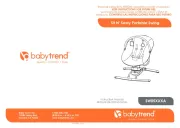
15 Juni 2025
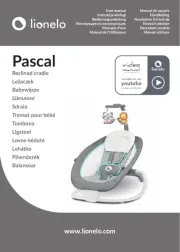
21 Mei 2025
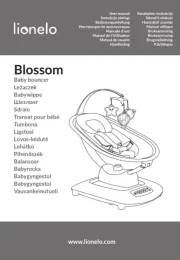
16 April 2025
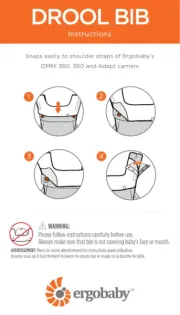
3 April 2025
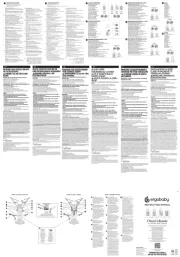
2 April 2025

2 April 2025
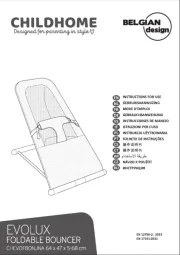
26 Maart 2025
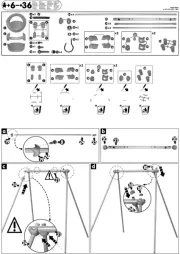
26 Februari 2025
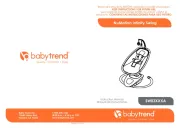
28 Januari 2025
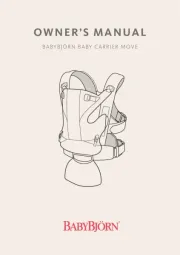
3 December 2024